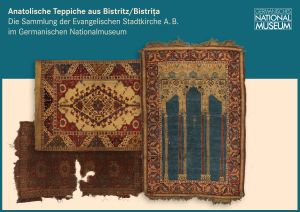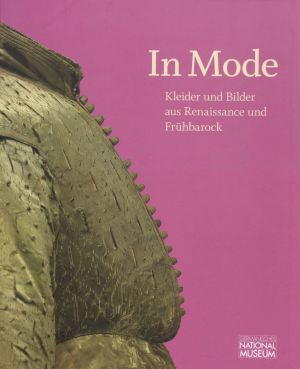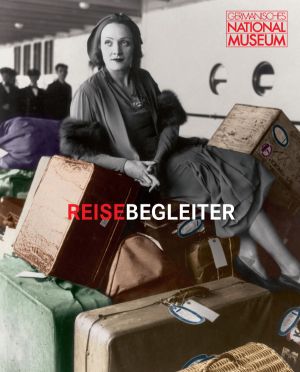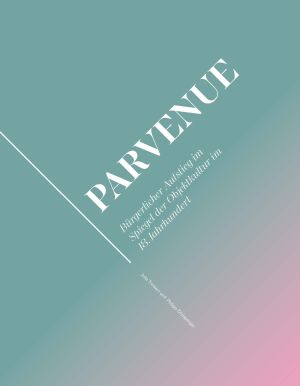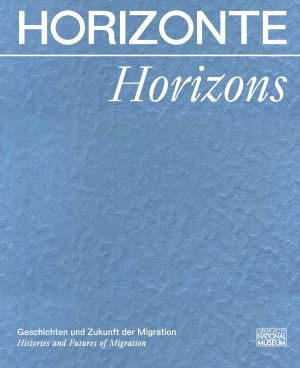Kregeloh, Anja
Anatolische Teppiche aus Bistritz/Bistrița: Die Sammlung der Evangelischen Stadtkirche A. B. im Germanischen Nationalmuseum
Die Publikation enthält die Ergebnisse des 2017–2020 durchgeführten interdisziplinären Forschungsprojekts zu den anatolischen Teppichen aus der Evangelischen Kirche A. B. in Bistritz. Auf ihrer Flucht 1944 brachten Mitglieder der Kirchengemeinde die Teppiche neben anderen Wertgegenständen mit und deponierten sie 1952 als Leihgabe im Germanischen Nationalmuseum. Der Bestand konnte nun erstmals eingehend kunsthistorisch und -technologisch untersucht werden. Anhand von Vergleichen mit anderen Sammlungen und der Auswertung von Schriftquellen, insbesondere aus Bistritz, Kronstadt und Hermannstadt, wurde die Sammlung von ihrer Entstehungsgeschichte bis zu ihrer heutigen Bedeutung für die Erinnerung an die Heimat der siebenbürgisch-sächsischen Geflüchteten kulturhistorisch eingeordnet.
In Mode: Kleider und Bilder aus Renaissance und Frühbarock
Der Begleitband zur Ausstellung im Germanischen Nationalmuseum vom 03.12.2015 - 06.03.2016 stellt die rund 50 Originalkostüme des Museums aus der Zeit von 1560 bis 1650 vor, die in der Sonderausstellung erstmals präsentiert werden, ergänzt um internationale Leihgaben. Gemalte und grafische Porträts der Zeit überliefern ursprüngliche Wirkungen und Trageweisen. Sie inszenierten die Dargestellten und deren Status, während illustrierte Flugblätter modekritische Ansichten verbreiteten. Den Kleideralltag dokumentieren archäologische Funde aus einer Bremer Schneiderwerkstatt des frühen 17. Jh. sowie heute ebenfalls selten erhaltenes Arbeitsgerät und Zunftutensilien. Der „Fokus Restaurierung“ geht anhand ausgewählter Exponate auf die aufwendigen Herstellungs- und konservatorischen Methoden ein. Im Anhang sind zu den textilen Objekten des GNM Materialien und Techniken erfasst. Der Katalog bietet Nahsichten auf Formen, Materialien und Dekore frühneuzeitlicher Kleidung und macht ihre in Vergessenheit geratenen Botschaften für heutige Betrachter wieder lesbar.
Reisebegleiter – mehr als nur Gepäck
Aussehen und Material von Reisegepäck passten sich in den letzten 250 Jahren den veränderten Verkehrsmitteln und Bedürfnissen einer zunehmend mobileren Gesellschaft an. Die 23 Beiträge des Ausstellungsbegleitbandes präsentieren die breite Palette an Gepäckstücken von der Gesindetruhe über den Schrankkoffer bis zu Bord-Case und Plastiktüte und bilden nahezu alle Exponate der Ausstellung zumeist in Farbe ab.
Erstmals sind Materialität, Funktionalität und zeitliche Einordnung gemeinsam erfasst. Unterschiedlichste Facetten von „Reisebegleitern“ wie Kofferwerbung, der Gepäckverkehr bei der Bahn, Militärgepäck, der Koffer im Museum, Gepäckversicherung, das Schreiben auf Reisen oder umfangreiche Reiseservice erscheinen in ihrem jeweiligen kulturgeschichtlichen Kontext. Im Anhang sind nach dem Ausstellungsplan die technischen Daten der Exponate erfasst.
Parvenue: Bürgerlicher Aufstieg im Spiegel der Objektkultur im 18. Jahrhundert
Parvenüs des 18. Jahrhunderts sind gesellschaftliche Akteur*innen mit besonderer Ausrichtung, da sie mehr als andere auf den Einsatz materieller Kultur zum schnellen Aufstieg in den kompetitiven Gesellschaften der Frühneuzeit angewiesen waren. Für die Repräsentation durch Kunst und Kunsthandwerk war es ihre zentrale Herausforderung, den Einsatz der Artefakte zu diesem Zweck zwischen Anpassung und Distinktion besonnen zu moderieren. Als bislang wenig beachtete Instrumente der vertikalen sozialen Mobilität spielen (Kunst)Objekte und deren identitätsstiftende Bedeutungszuschreibungen deshalb eine prominente Rolle: Sie sind das Fundament einer sozialhistorisch flankierten Kunst- und Bildgeschichte.
Horizonte - Horizons: Geschichten und Zukunft der Migration / Histories and Future of Migration
Von der Steinzeit zum Weltraumzeitalter: Der Aufbruch ins Unbekannte ist eine menschliche Grunderfahrung – und Teil jeder Familiengeschichte. Wohin gehen? Was mitnehmen? Dieser Band stellt beispielhalft Menschen vor, die sich aus unterschiedlichen Gründen auf den Weg gemacht haben, darunter Kinderbuchautorin Judith Kerr sowie die Künstler Frank Auerbach und Gerhard Richter. Ihre Geschichten zeigen, dass auch Kunst und Kultur ohne Migration undenkbar sind. Entlang der Etappen von Migration, vom Aufbruch bis zur Ankunft, ergründen die Autor*innen des Bandes migrantische Erfahrungen und schließen mit einem Ausblick in die Zukunft, d.h. dem Weg ins All zwischen Science und Fiction.



